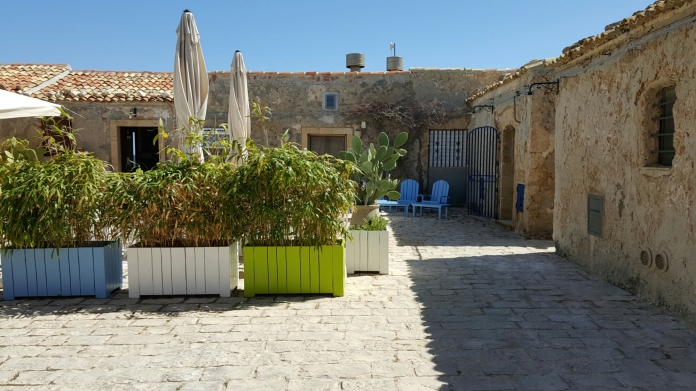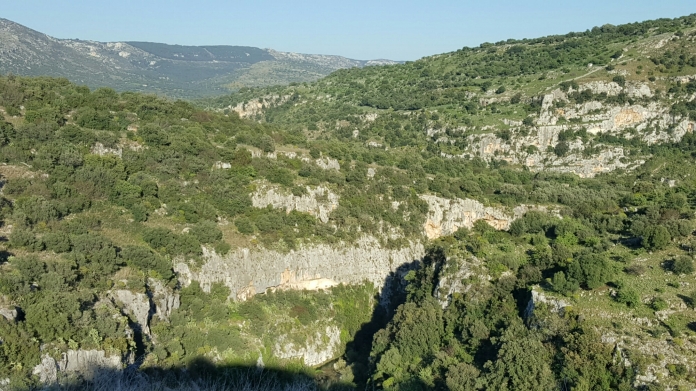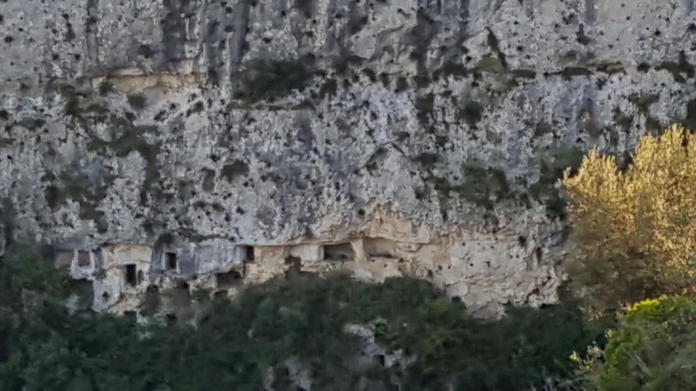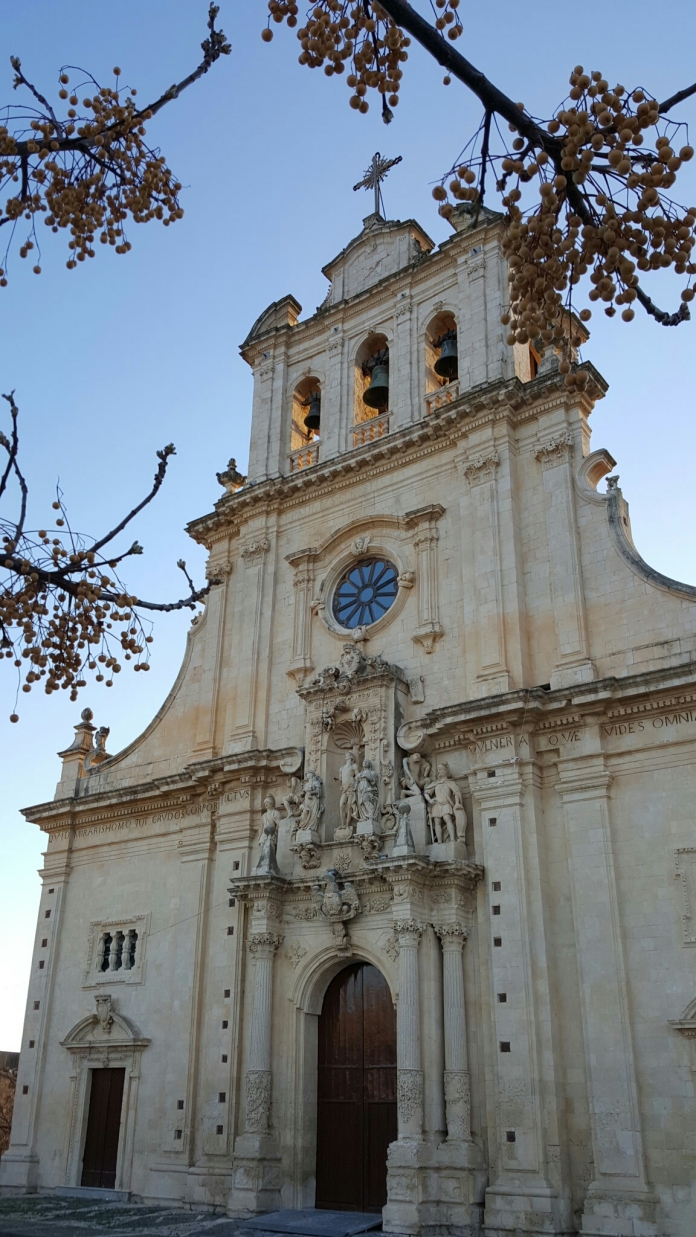We went this morning on Susie Huxley’s recommendation to Marzamemi, a charming, small, out-of-season fishing port, full of empty restaurants and shops selling tins of tuna, infinitely preferable to Portopalo, our other destination:-
Monthly Archives: March 2016
Pantàlica
I’m not sure I would recommend the Necropoli at Pantàlica, not least because of its extreme remoteness up a long gorge north of Ferla where one struggles to spot the dark holes in the limestone cliffs which were used as sites of burial from the 13th. century BC:-
Ferla
We hadn’t particularly planned to stop in Ferla en route to Pantàlica, but were impressed by its three baroque churches. San Sebastiano designed by Michelangelo Di Giacomo and finished in 1741:-
Palazzolo Acrèide
We went up onto the limestone plateau above Noto to Palazzolo Acrèidi, a dusty hilltop town with a grand town square dominated by the church of San Sebastiano:-
Noto Antica
Several people suggested that we visit Noto Antica, the medieval settlement of castle, church and gorge which was comprehensively deserted following the earthquake of 1693 and the resettlement of the new town ten miles to the south. It leaves an eerie sense of desolation up in the hills. Although the guidebooks are sniffy about it because there’s not much to see, it’s deeply silent.
This is the entrance gateway:-
The old town walls:-
Syracuse (2)
In preparation for visiting Syracuse, I read about its importance to the Greeks: its original settlement as a colony in 733 BC; its rule by the tyrant Hieron I who encouraged Aeschylus; its war with Athens which resulted in defeat for the Athenians who were imprisoned or sold into slavery unless they were able to recite the poetry of Euripides; the tyrant Dionysus who wrote plays and encouraged Plato; his son Dionysus II who used to ‘loiter in the fish markets and squabble in the streets with common women’; the tyrant Agothocles who had been a potter; and finally, Hieron II who stupidly switched allegiance from Rome to Carthage which led to its downfall following a long siege and the death of Archimedes. I remember none of this from my studies of Greek history. Nor was I aware of the significance of Cicero’s Verrine Orations, lamenting the way that Sicily had been stripped of its wealth by the Roman governor Verres. ‘Among the most sacred and revered Sicilian sanctuaries, there was not a single one he failed to plunder’ (see Tiffany Jenkins, Keeping their Marbles, p.124).
Syracuse (1)
In the afternoon, we went to the ruins of ancient Syracuse, particularly the Greek theatre, cut out of the rock and designed for 15,000 spectators:-
Ortygia
We spent much of the day in Ortygia, the peninsula to the south of Syracuse, beginning with the daily market for fish, spices and fresh vegetables:-
Noto
It took a while for the pleasures of Noto to sink in as we sat drinking Aperol in the Piazza XVI Maggio next to the grand neoclassical Teatro Comunale. Like all Italian cities, it yields its pleasures more in the side streets where there are old decayed palazzi with decorative metalwork balconies and away from the Corso where the tourists were congregated on a hot Easter Monday. We started with San Francesco, completed in 1745 by Vincenzo Sinatra:-
Next door is the Museo Civico:-
Hong Kong Museum of History
My last port-of-call before catching the plane back to London was the Hong Kong Museum of History where I went to see the Radiant Ming exhibition organised under the auspices of the so-called Min Chiu Society (‘I was not born with knowledge, but being fond of antiquity, I am quick to seek it’). I went on the recommendation of one of my readers (thank you). No photography or I would have taken photographs of the gold earrings in the shape of a calabash and the bright emerald green of one of the glazes in susancai style (‘three colours not including red’).
This is my last picture of Hong Kong:-


















You must be logged in to post a comment.